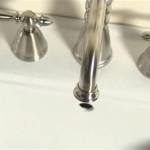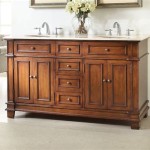How Much to Replace a Bathroom Vanity: A Comprehensive Cost Guide
Replacing a bathroom vanity is a common home improvement project that can significantly enhance the aesthetic appeal and functionality of a bathroom. However, before embarking on this endeavor, it's crucial to understand the associated costs. The price to replace a bathroom vanity can vary widely depending on several factors, including the type of vanity, materials, size, installation complexity, and geographical location. This article provides a detailed breakdown of the costs involved in replacing a bathroom vanity, helping homeowners make informed decisions and plan their budgets effectively.
Factors Influencing Bathroom Vanity Replacement Costs
The cost of replacing a bathroom vanity is impacted by a variety of elements. Being aware of these influences allows for a more accurate estimation of the overall project expense. The major factors contributing to the cost are outlined below:
Vanity Type and Style
The type and style of the vanity are significant cost drivers. Prefabricated vanities, often found at big box stores, are typically the most affordable option. These are mass-produced and readily available, offering a cost-effective solution for a bathroom refresh. On the other hand, custom-built vanities, designed and constructed specifically for a particular bathroom space, command a higher price due to the individualized design and craftsmanship involved.
Wall-mounted vanities, which float above the floor, can add a modern touch but generally require more complex installation, potentially increasing labor costs. Double vanities, with two sinks, naturally cost more than single vanities due to the increased materials and plumbing requirements. Similarly, vanities constructed from solid wood typically have a higher price point than those made from particleboard or MDF (medium-density fiberboard).
Vanity Material
The material used for the vanity's cabinet and countertop significantly influences the overall cost. Cabinet materials can range from inexpensive laminate to solid hardwood. Laminate is a budget-friendly option that is easy to clean but less durable than other materials. MDF is a common choice for painted vanities as it provides a smooth surface for paint adhesion. Solid wood, such as oak, maple, or cherry, offers superior durability and a classic aesthetic but commands a higher price.
Countertop materials also vary widely in cost. Laminate countertops are the most affordable but can be susceptible to scratches and water damage. Cultured marble is a popular mid-range option that offers a seamless look between the sink and countertop. Quartz and granite are higher-end options known for their durability, heat resistance, and aesthetic appeal. Solid surface materials, like Corian, offer a blend of durability and design flexibility but may also be more expensive. The choice of countertop material will directly impact the vanity's price.
Vanity Size and Configuration
The size of the vanity is a primary determinant of its cost. Larger vanities, naturally, require more materials and labor to manufacture and install. Standard vanity widths typically range from 24 inches to 72 inches, with prices generally increasing linearly with size. The depth and height of the vanity can also influence the price, although to a lesser extent.
The configuration of the vanity, including the number of drawers and cabinets, also affects the cost. Vanities with intricate storage solutions or specialized features, such as pull-out shelves or built-in organizers, will generally be more expensive than simpler designs. The placement of the sink(s) on the countertop can also impact the price, particularly if modifications to plumbing are required.
Installation Costs
Installation costs represent a significant portion of the overall expense of replacing a bathroom vanity. This cost can vary based on the complexity of the installation, the existing plumbing configuration, and the geographic location. A simple vanity replacement, where the new vanity is the same size and configuration as the old one, will typically have lower installation costs.
However, if the new vanity requires plumbing modifications, such as moving drain lines or water supply lines, the installation cost will increase significantly. This type of work often requires the expertise of a licensed plumber, which adds to the labor expenses. In addition, if the existing flooring or walls need to be repaired or modified to accommodate the new vanity, this will further increase the installation costs. Removal and disposal of the old vanity can also add to the overall price.
Geographic Location
Labor costs and material prices can vary significantly depending on the geographic location. Areas with a higher cost of living generally have higher labor rates for contractors and plumbers. Material prices can also fluctuate based on local supply and demand. It is essential to obtain multiple quotes from local contractors to get an accurate estimate of the installation costs in a specific area.
Cost Breakdown: Materials
A detailed examination of the material costs involved in a bathroom vanity replacement is crucial for budgeting. The following sections outline the costs associated with different vanity components.
Vanity Cabinet
The vanity cabinet is the primary component of the vanity and houses the sink and storage space. The cost of the cabinet can range from a few hundred dollars to several thousand dollars, depending on the material, size, and style. A basic prefabricated vanity cabinet made from laminate or MDF may cost between $200 and $500. A solid wood cabinet with intricate detailing can cost $1,000 or more.
Countertop
The countertop is the visible surface of the vanity and provides a workspace around the sink. Laminate countertops are the most affordable, typically costing between $50 and $150 per linear foot. Cultured marble countertops range from $100 to $300 per linear foot. Quartz and granite countertops are the most expensive, ranging from $200 to $500 or more per linear foot.
Sink and Faucet
The sink and faucet are essential components of the vanity. Sink prices can range from $50 for a basic drop-in sink to $500 or more for a designer vessel sink. Faucet prices vary depending on the style, finish, and features, ranging from $50 for a basic faucet to $500 or more for a high-end model with advanced features.
Hardware
Hardware, such as knobs and pulls, can add a finishing touch to the vanity and enhance its aesthetic appeal. While seemingly small, hardware can contribute to the overall cost. Basic knobs and pulls may cost a few dollars each, while designer hardware can cost $20 or more per piece.
Cost Breakdown: Labor
The labor costs associated with replacing a bathroom vanity can significantly impact the overall project expense. The following sections outline the typical labor costs involved.
Removal and Disposal of Old Vanity
The first step in replacing a bathroom vanity is to remove and dispose of the old vanity. This task typically involves disconnecting the plumbing, detaching the vanity from the wall, and hauling it away. The cost for this service can range from $50 to $200, depending on the size and complexity of the removal.
Installation of New Vanity
The installation of the new vanity involves assembling the cabinet, connecting the plumbing, and securing the vanity to the wall. The cost for this service can range from $200 to $800, depending on the complexity of the installation and the need for plumbing modifications. Complex installations, such as those involving wall-mounted vanities or significant plumbing changes, will typically have higher labor costs.
Plumbing Modifications
If the new vanity requires plumbing modifications, such as moving drain lines or water supply lines, the cost will increase. Plumbing work is typically billed at an hourly rate, which can range from $75 to $150 per hour, depending on the location and the plumber's experience. The total cost for plumbing modifications can range from $100 to $500 or more, depending on the extent of the work required.
Additional Costs
In addition to the material and labor costs, there may be other expenses associated with replacing a bathroom vanity. These can include permit fees, which may be required for plumbing work; drywall repair, if the existing wall is damaged during the removal of the old vanity; and flooring repair, if the existing flooring needs to be modified to accommodate the new vanity. These additional costs can add to the overall project expense.
In summary, understanding the various factors that influence the cost of replacing a bathroom vanity is essential for effective budgeting and planning. By considering the type of vanity, materials, size, installation complexity, and geographic location, homeowners can gain a more accurate estimate of the overall project expense and make informed decisions about their bathroom renovation project.

Bathroom Vanity Installation Cost 2024 Average S

2024 Cost To Replace Bathroom Countertop A Guide

2024 Vanity Installation Cost A Complete Guide

How Much Does Bathroom Vanity Installation Cost 2024

How To Install A Bathroom Vanity

How Much Does It Cost To Install A Bathroom Vanity 2024 Bob Vila

Bathroom Vanity Cost Find Out How Much To Replace

2024 Cost To Replace Bathroom Countertop A Guide

How To Remove A Bathroom Vanity Budget Dumpster

11 Low Cost Ways To Replace Or Redo A Hideous Bathroom Vanity Hometalk
Related Posts







